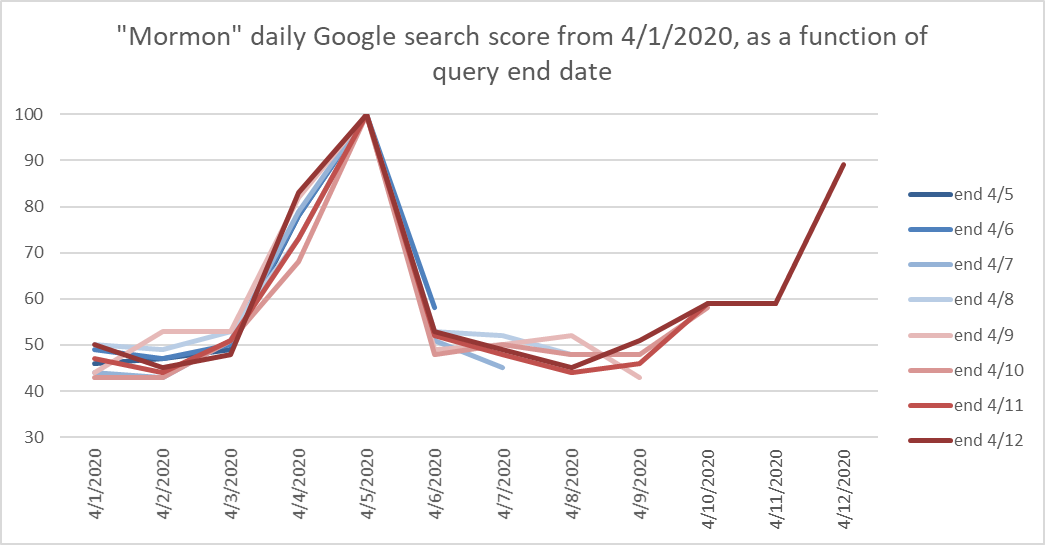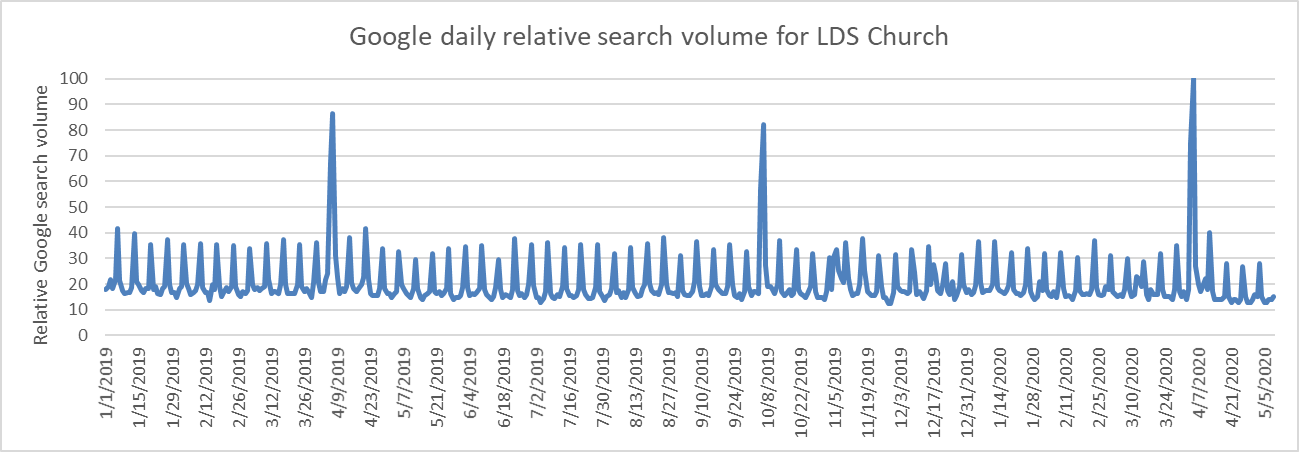The Church released guidelines a couple of days ago for how returning to church meetings will look. Given how quickly the Church acted in closing temples and suspending church meetings as the COVID-19 pandemic started, I’m disappointed that these guidelines don’t seem to take it all that seriously. This post is a laundry list of comments on the Church’s guidelines and a wishlist of guidelines I would like to see before I’d be really comfortable attending church in person again.
Greetings
Mormons are a handshaking people. Sometimes we’re even huggers. These types of greetings aren’t safe with the coronavirus on the loose. The Church’s guidelines do mention this, but only in the context of people known to be sick: “Avoid close contact with people who are sick (this may include avoiding shaking hands or other customary greetings).” This seems to overlook the entire problem we’re facing, which is that people who appear well may be carrying the virus! I wish they would have said more generally something about not engaging in greetings that involve touching other people, and suggesting touchless greetings like waves or bows in their place.
Sacrament
The guidelines suggest that people sit only in every other row in the chapel so that the sacrament can be passed to everyone directly. This is a good step, but I don’t think it goes far enough. A single symptom-free carrier priest could still infect an entire ward in a heartbeat. I like the idea I’ve seen several people suggest of having people bring their own bread and water. The priest would say the sacrament prayer like usual, but it would be blessing the bread and water people already have with them. This would be in keeping with the Church’s statement about the prayer-giver and the emblems having to be in the same location.
I suspect, though, that Church leaders wouldn’t go for such a solution, because it would require possibly non-priesthood-holders to prepare the sacrament, in whatever sense of the word prepare. So I have a more radical solution that is completely in keeping with the guidelines. How about if we have someone stand at the pulpit and say the sacrament prayer, but not to bless any emblems, but rather just to remind us of the sacrament and help us look forward to a time when we can take it again and recommit to live our covenants? This is precisely what the April document “Directions for Essential Ordinances, Blessings, and Other Church Functions” already recommends for people in “unusual circumstances” who don’t have access to the sacrament. Well, now we’re in the unusual circumstance of not being able to take the sacrament together safely, so how about if we put it on hold until we can?
This would take a forward-thinking bishop, but a side advantage of this setup would be that women could be the sacrament prayer readers some weeks. Remember that there’s nothing actually being blessed. It’s just like when individual people read and ponder the sacrament prayers at home, only now we’re in the same room, so we’re having one person read aloud for efficiency. As a believer in the need for women’s ordination, I love the idea of normalizing our hearing the sacrament prayers spoken in women’s voices.



